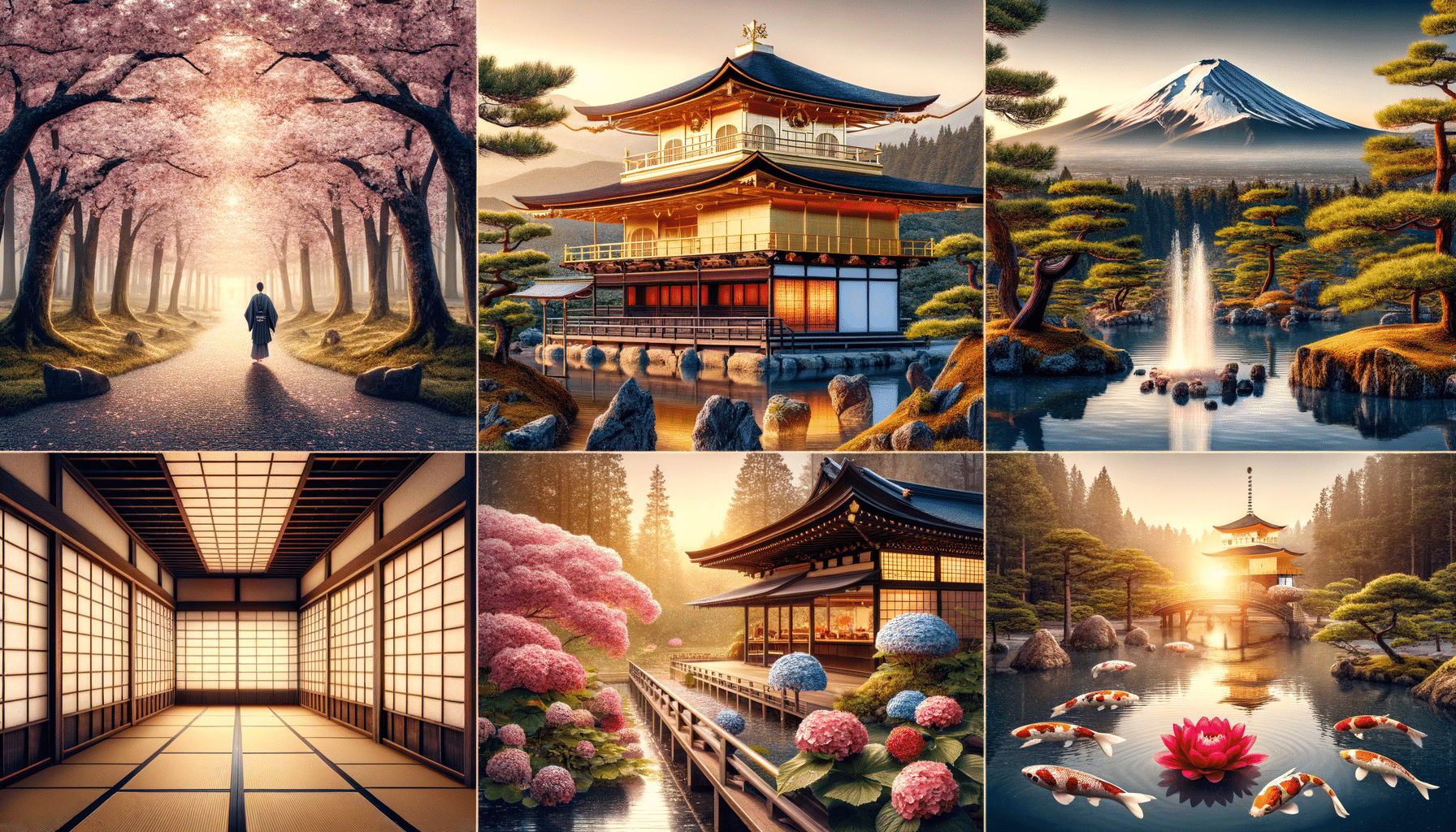Experience Japan in 14 Days: A Comprehensive Guide
Dive into the rich culture and stunning landscapes of Japan with our all-encompassing 14-day tour package.

The Allure of Japan: Why a 14-Day Journey?
Japan, a land where ancient traditions seamlessly blend with modern innovation, offers travelers a unique experience that is both captivating and enlightening. A 14-day itinerary allows visitors to immerse themselves in the diverse landscapes, rich history, and vibrant culture of this fascinating country. From the bustling streets of Tokyo to the tranquil temples of Kyoto, Japan provides a wealth of experiences that cater to all interests.
Spending two weeks in Japan gives travelers the opportunity to explore both the well-trodden paths and the hidden gems. This duration strikes a perfect balance, enabling visitors to delve deep into the cultural fabric of the nation while also allowing time to relax and absorb the surroundings. Moreover, a 14-day journey ensures that travelers can experience the regional variations across the islands, from the culinary delights of Osaka to the natural beauty of Hokkaido.
Japan’s efficient and extensive transportation network makes it easy to navigate the country, ensuring that travelers can maximize their time exploring. With a well-planned itinerary, visitors can enjoy a harmonious blend of urban exploration, historical sites, and natural wonders. This comprehensive journey promises an immersive experience that leaves a lasting impression, making it a worthwhile endeavor for any traveler seeking to understand the heart and soul of Japan.
Tokyo: The Heartbeat of Modern Japan
The journey begins in Tokyo, Japan’s bustling capital and a city that epitomizes the country’s modernity and tradition. Known for its towering skyscrapers, cutting-edge technology, and vibrant pop culture, Tokyo is a city that never sleeps. Yet, amidst the hustle and bustle, one can find pockets of serenity in its historic temples and tranquil gardens.
Visitors can explore iconic landmarks such as the Tokyo Tower and the historic Asakusa district, home to the famous Senso-ji Temple. For a taste of Tokyo’s contemporary culture, neighborhoods like Shibuya and Harajuku offer a glimpse into the world of fashion and youth culture. The city is also a paradise for food enthusiasts, offering everything from Michelin-starred restaurants to bustling street food markets.
Tokyo’s public transportation system is among the most efficient in the world, making it easy to navigate the city’s vast expanse. Travelers can use the extensive subway network to explore different districts, each offering its own unique flavor and attractions. Whether it’s the high-tech world of Akihabara or the traditional charm of Yanaka, Tokyo promises a dynamic start to the Japanese adventure.
Kyoto: A Journey Through Time
After the fast-paced life of Tokyo, Kyoto offers a serene escape into Japan’s past. Known as the cultural capital of Japan, Kyoto is home to over a thousand temples, stunning gardens, and traditional tea houses. This city is a living museum, where history and tradition are preserved in every corner.
Visitors can wander through the historic streets of Gion, where geisha culture is still alive, or explore the majestic Kinkaku-ji, the Golden Pavilion, which is one of Kyoto’s most iconic landmarks. The Arashiyama Bamboo Grove offers a tranquil walk through towering bamboo stalks, providing a perfect setting for reflection and relaxation.
Kyoto’s rich history is complemented by its culinary offerings, with traditional kaiseki dining providing an exquisite culinary experience. The city also hosts several cultural events and festivals throughout the year, offering visitors a chance to witness traditional Japanese arts and crafts. Kyoto’s timeless beauty and cultural richness make it a must-visit destination on any Japan itinerary.
Exploring the Natural Beauty of Hokkaido
Hokkaido, Japan’s northernmost island, offers a stark contrast to the urban landscapes of Tokyo and Kyoto. Known for its stunning natural beauty, Hokkaido is a paradise for nature lovers and outdoor enthusiasts. The island is famous for its national parks, hot springs, and winter sports, making it a year-round destination.
In the summer months, visitors can explore the vibrant flower fields of Furano and Biei, which offer a breathtaking display of color. The Shiretoko Peninsula, a UNESCO World Heritage site, provides opportunities for wildlife viewing and hiking amidst pristine landscapes. In winter, Hokkaido transforms into a snowy wonderland, with the Sapporo Snow Festival showcasing intricate ice sculptures and winter festivities.
Hokkaido’s culinary scene is equally impressive, with fresh seafood and local specialties such as miso ramen and dairy products. The island’s relaxed atmosphere and natural charm provide a perfect respite from the hustle and bustle of city life, allowing travelers to connect with the serene beauty of Japan’s landscapes.
Embracing the Spirit of Japan: A Cultural Immersion
A journey through Japan is incomplete without embracing its rich cultural heritage. From traditional tea ceremonies to sumo wrestling, Japan offers a plethora of cultural experiences that provide insight into its unique way of life. Participating in a tea ceremony, for example, offers a glimpse into the meticulous attention to detail and the aesthetic principles that define Japanese culture.
Visitors can also immerse themselves in the world of traditional arts by attending a kabuki or noh performance, where storytelling and drama are brought to life through elaborate costumes and expressive performances. For those interested in martial arts, witnessing a sumo tournament offers a fascinating look into this ancient sport, steeped in ritual and tradition.
Japan’s festivals, such as the cherry blossom festivals in spring and the vibrant summer matsuri, provide a chance to experience the communal spirit and joy that these celebrations bring. Engaging with these cultural practices allows travelers to gain a deeper understanding of Japan’s values and traditions, enriching their overall experience.